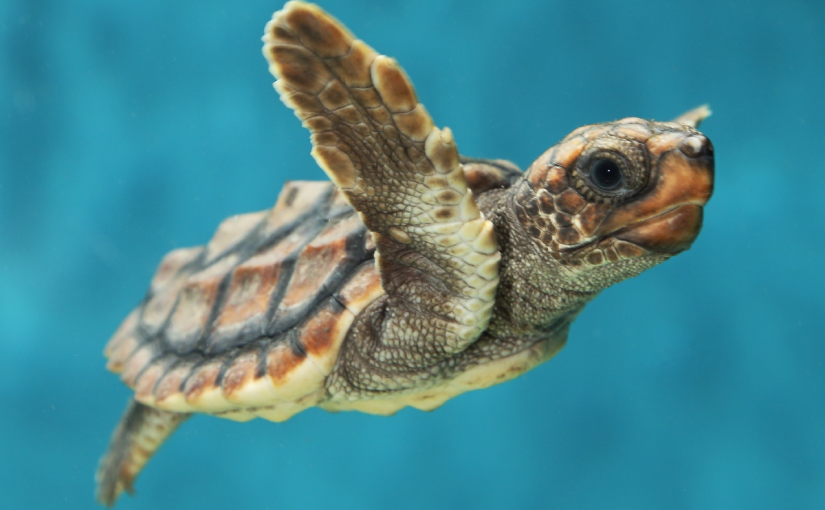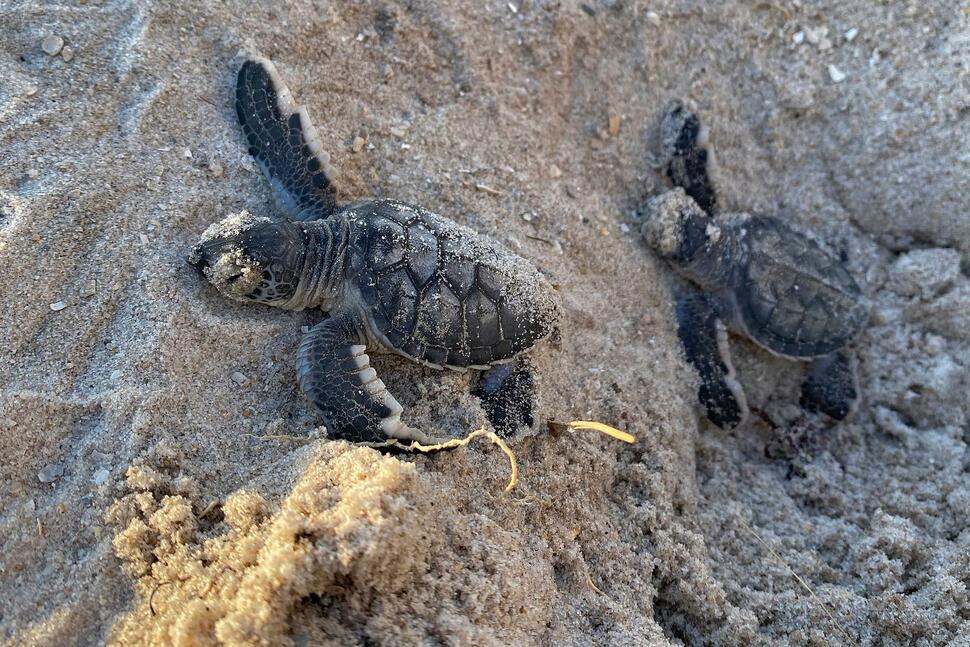In a heartening turn of events, Florida’s sea turtles have etched a record-breaking chapter in their ancient saga, defying climate concerns. In the thousands, they have continued their timeless nesting ritual, creating milestones along the sandy shores. Preliminary state data paints a vivid picture, revealing an astonishing 133,840 loggerhead turtle nests, surpassing the 2016 record, while green turtle nests reached an unprecedented 76,500, exceeding the 2017 mark.
While South Carolina, Alabama, North Carolina, and Georgia also report high sea turtle nest numbers, not all have broken records like Florida. Justin Perrault, Vice President of Research at Loggerhead Marinelife Center in Juno Beach, emphasizes the remarkable abundance of nests this year in Florida.
“We had more nests than we had ever seen before on our local beaches,” remarked Perrault, whose organization monitors Palm Beach County and broke a local record by 4,000 nests. “That’s quite a bit of nesting.”
Within the roster of seven sea turtle species—loggerhead, green, leatherback, hawksbill, Kemp’s ridley, olive ridley, and flatback—all are classified as either endangered or threatened. During summer nights, these magnificent creatures make their way ashore, meticulously digging pits in the sand, depositing dozens of eggs, covering them with care, and then returning to the vast expanse of the sea. Florida’s beaches stand as one of the world’s crucial hatcheries, especially for loggerheads, contributing to the preservation of these remarkable species.

The journey from sea turtle hatchling to adulthood is fraught with challenges, and the odds are slim, with only approximately one in 1,000 hatchlings making it to maturity. These resilient creatures face a myriad of natural threats, from predators on land and in the ocean to disruptions in nests and the daunting task of reaching the water after hatching. In a tragic incident this year along a stretch of the Florida Gulf Coast with 75 counted nests, the majority fell victim to the surging waters from Hurricane Idalia in August.
Survival for sea turtle hatchlings is particularly challenging, with only about one in 1,000 making it to adulthood. They contend with various natural threats, from land and ocean predators to disruptions in nests and challenges reaching the water after hatching. In a distressing incident this year along a Florida Gulf Coast stretch with 75 counted nests, most were lost to the surge from Hurricane Idalia in August.
Female turtles generally lay eggs in a three-year cycle, leading to up-and-down years of nests, she said. “The nesting process is very exhausting and, in this break, females regain the energy to do the process again,” Oakley said.
Climate change exacerbates these challenges by diminishing coastlines as sea levels ascend and intensifying tropical storms. The heightened temperatures of the air, water, and sand, coupled with alterations in the ocean currents crucial for turtle migration, further diminish the prospects of survival, as reported by Oceana, an international conservation group.
Additionally, the challenges for sea turtles extend beyond hatching. Mothers face difficulties finding suitable nesting spots, especially in areas with human-built seawalls. Predators like raccoons and coyotes pose threats to nests, and hatchlings must navigate their way to the sea while avoiding electric lights that can disorient them.
Michelle Pate, a biologist at the South Carolina Department of Natural Resources, highlighted that despite an increase in nest numbers, tens of thousands of hatchlings struggle to reach the water, particularly across much of the Southeast.
“If we can’t ensure hatchlings emerge and reach the ocean successfully, then an increase in nest numbers doesn’t contribute significantly,” she explained.
While there may be record numbers of turtle nests currently, Perrault cautions that this doesn’t guarantee robust hatchling production.
“Yes, we’re witnessing record numbers now, but our hatchling production may not be as substantial. Looking ahead 20 to 30 years, when these turtles return to nest, we might not experience the same record numbers,” he warned.
